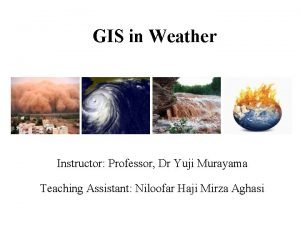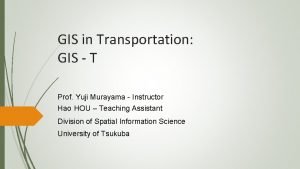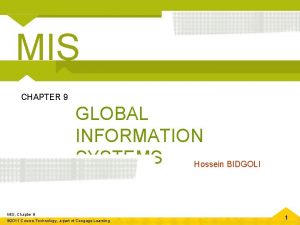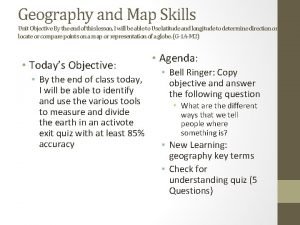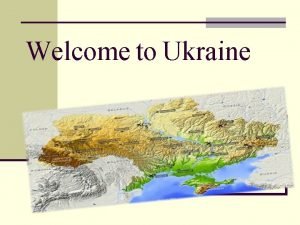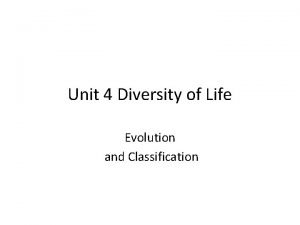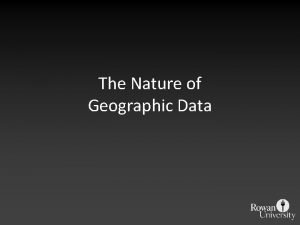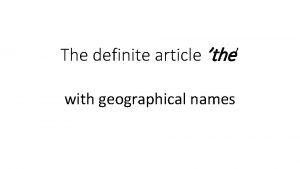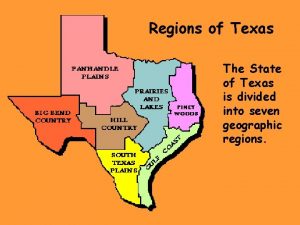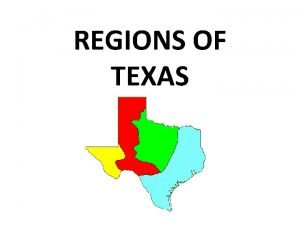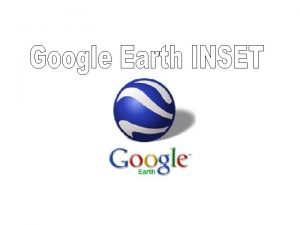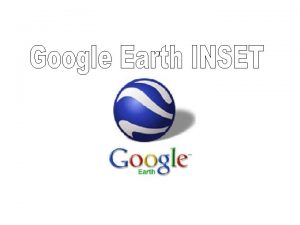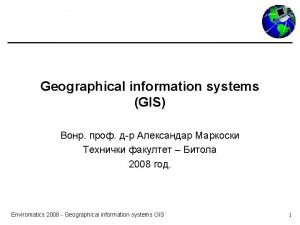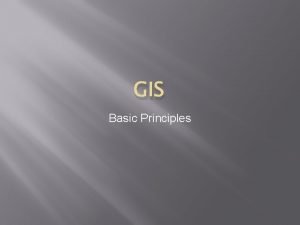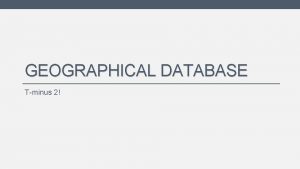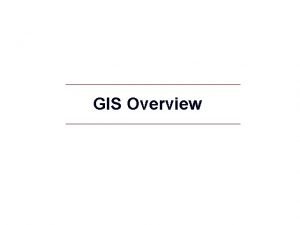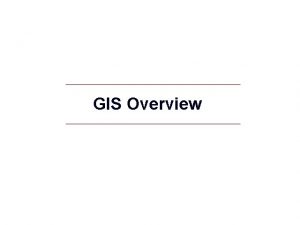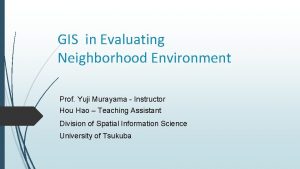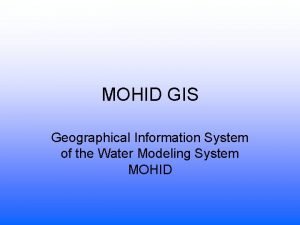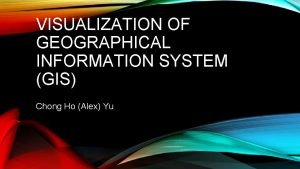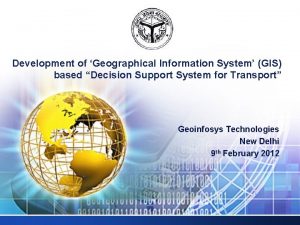GIS Geographical Information System Instructure Professor Dr Yuji

















- Slides: 17

GIS Geographical Information System Instructure: Professor, Dr Yuji Murayama Teaching assistant : Niloofar Haji Mirza Aghasi

WHAT IS GIS ? GIS is a computer system which contains hardware, software, geographic information, human factor and models. GIS aims to create, cave, present, grasp … of geographical information in order to analyze different phenomena. In other word GIS acts as a support key in any decision making.

WHAT IS GIS ? GIS is not only a computer system for creating maps. Although it can create different map but it is analytical computer system. GIS is a spatial analytical tool. The most important GIS qualification is identifying spatial relationships between different affects on the earth and map.

WHAT GIS CAN DO GIS can analyze different type of spatial and none-spatial data and display these analysis on maps.

GIS COMPONENTS Building Streets Users Air Photos GIS Software Procedures Hardware

TYPE OF DATA Spatial data Non spatial data

TYPE OF DATA 1. Attribute data: • Statistics, text, images, sound, etc 2. Spatial data: – Vector data – discrete features: • Points • Lines • Polygons (zones or areas) – Raster data: • A continuous surface

TYPE OF DATA Source: www. e-education. psu. edu

GIS INFORMATION CREATOR Satellite image � Remote sensing � Classic photogrammetry � GPS � Exciting maps and documents � GIS

GIS COMPONENTS - HARDWARE Input – scanner, digitizer, GPS CPU, hard drive LAN Printer, plotter

MODELLING THE REAL WORLD IN RASTER AND VECTOR FORMATS vector y 1 1 20 50 1 2 24 45 1 3 52 55 x 2 1 0 45 46 40. . . raster 000000020 000001000 02001000020000 2 2 2 0 1. . . 11

URBAN PLANNING - Land Use Changes - Housing Planning - Urban Development Tehran’s City Structure Niloofar Haji Mirza Aghasi Shanghai industries in the Civil War period Map Source: www. virtualshanghai. net

DISASTER MANAGMENT � Tsunami � Flooding � Drought � Avalanche � Fire � Road Accident � Train Accident

ACCIDENTS ANALYSIS GIS is a comprehensive management tool for traffic safety. Since the 1990 s, GIS technologies have been used more often for such studies due to the accessibility of low cost GIS with user-friendly interfaces. GIS can provide a program for data visualization for finding out the relationships between graphical and non-graphical outputs. Tehran's accidents density map by Niloofar Haji Mirza Aghasi

CRIME ANALYSIS Application of GIS for crime mapping utilizes the various crime records integrated with ancillary information to derive the hotspots and carried out different objectives such as: n n n To identify hot spots as well as driving forces for different types of crime. To help police to take preventive measures like deployment of forces in area prone to crime. To develop a methodological framework for crime mapping using GIS Crime mapping in Tifton, Georgia by Dr. Roy Cole

ADVANTAGES OF GIS – GIS is a key of making best decision in any different science, business, etc. – GIS can explore both geographical and thematic components of data – Can handle, connect and analyse of large volumes of data – Can connect and integrate data from any disparate sources – Allows a wide variety of forms of visualisation

LIMITATIONS OF GIS • Collecting data is difficult procedure. • some data are expensive. • Only professional experts can use GIS software completely.
 Yuji murayama
Yuji murayama Yuji murayama
Yuji murayama Yuji takeuchi
Yuji takeuchi Promotion from associate professor to professor
Promotion from associate professor to professor In a global information system high coordination
In a global information system high coordination What are latitudes and longitudes
What are latitudes and longitudes Ukraine geographical position
Ukraine geographical position Canvas neshaminy
Canvas neshaminy Pearland.instructure
Pearland.instructure Can different species reproduce
Can different species reproduce Registration process of geographical indication
Registration process of geographical indication Registration of geographical indication
Registration of geographical indication Physical features of the southeast
Physical features of the southeast Nature of geographic data
Nature of geographic data Definite article with geographical names
Definite article with geographical names Roman
Roman Seven regions of texas
Seven regions of texas 4 regions in texas
4 regions in texas
